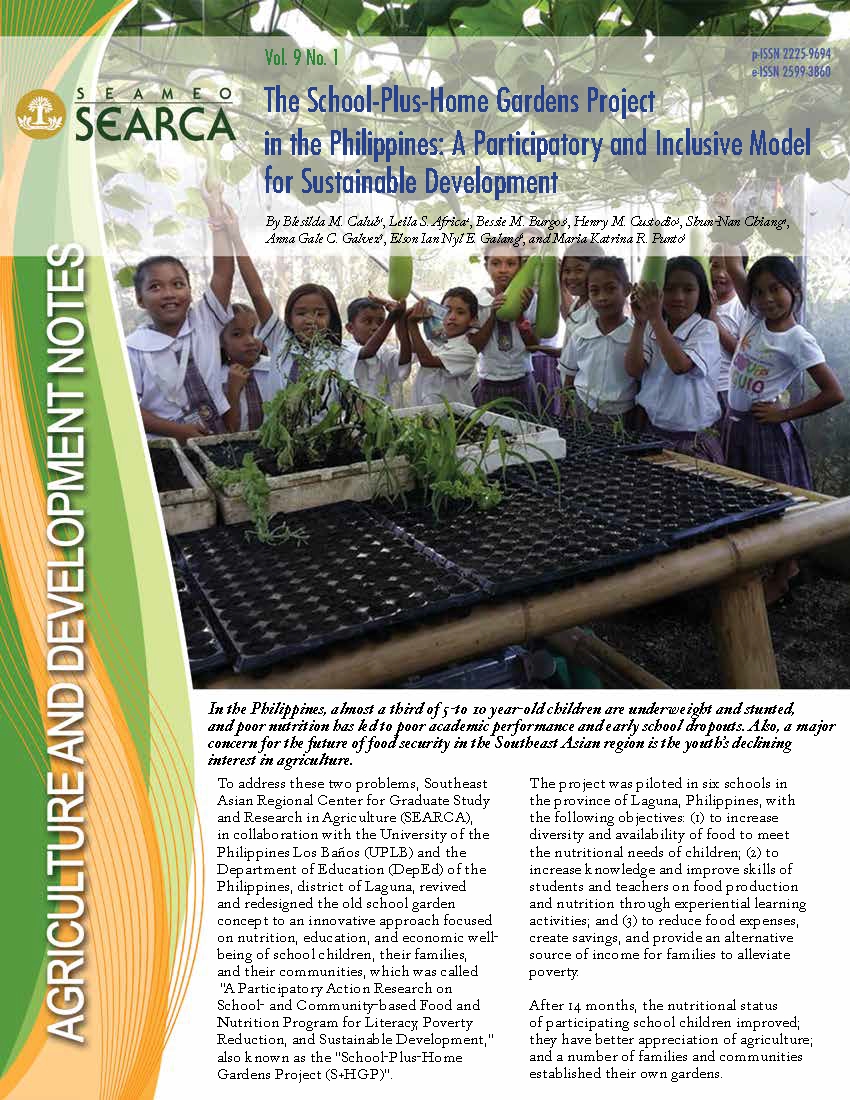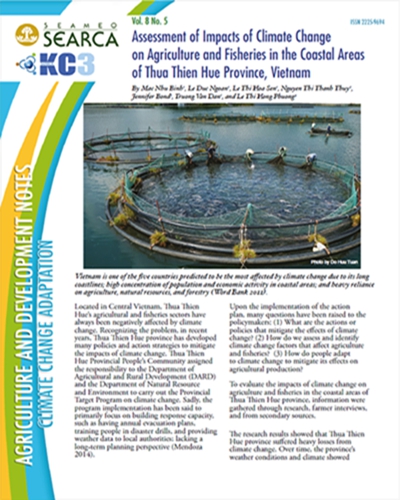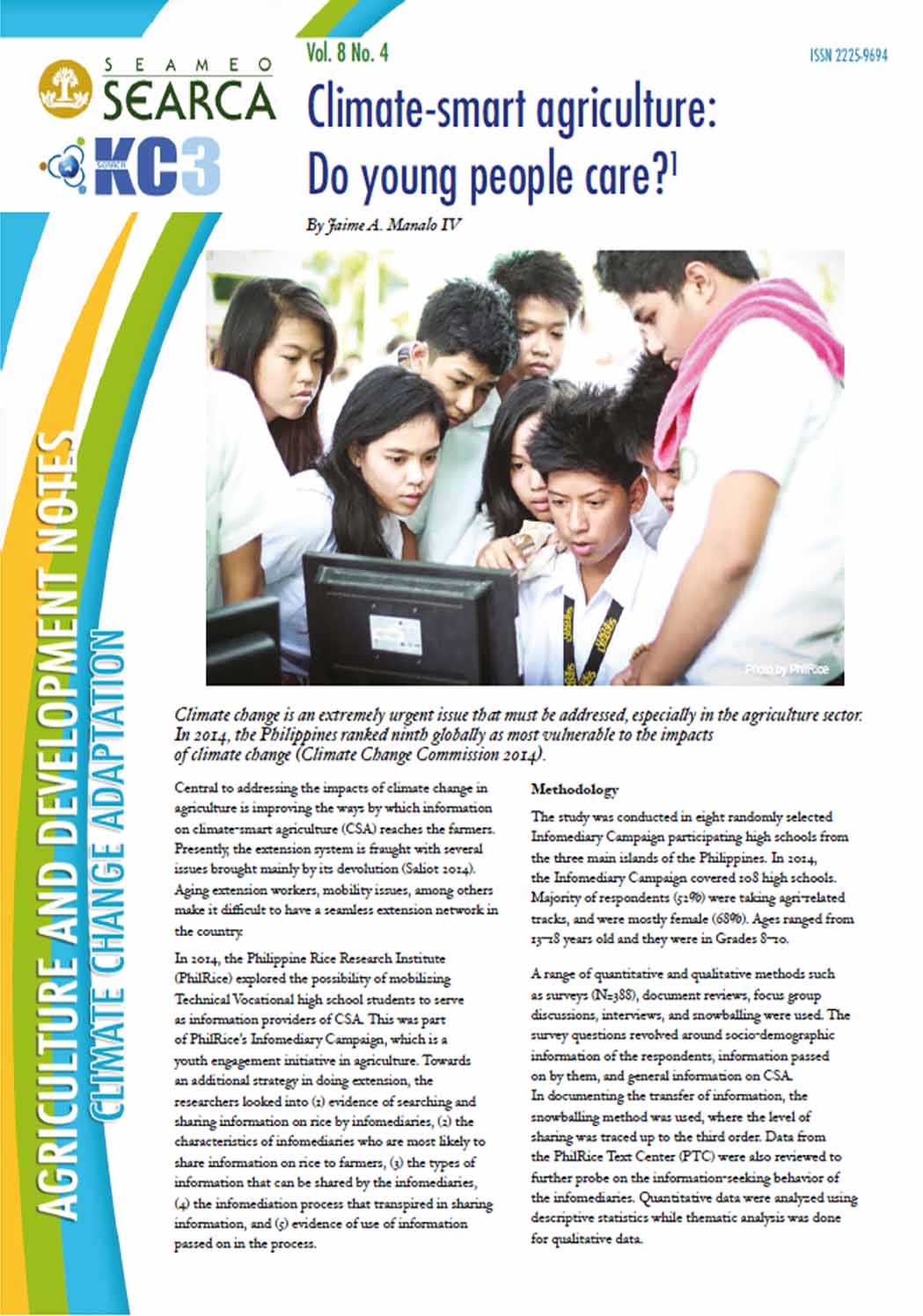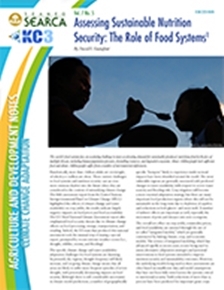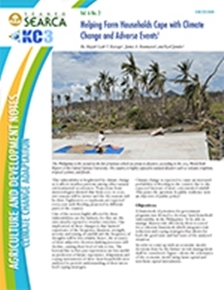Adaptation Notes
Saltwater intrusion is a problem among Filipino and Vietnamese farmers. Well-constructed intervention policies and training can support the decision to continue rice cultivation and create stronger communities amidst the threats of saltwater intrusion.
In the Philippines, almost a third of 5-to 10-year-old children are underweight and stunted, and poor nutrition has led to poor academic performance and early school dropouts. Also, a major concern for the future of food security in the Southeast Asian region is the youth's declining interest in agriculture. To address these two problems, Southeast Asian Regional Center for Graduate Study and Research in Agriculture (SEARCA), in collaboration with the University of the Philippines Los Baños (UPLB) and the Department…
Vietnam is one of the five countries predicted to be the most affected by climate change due to its long coastlines; high concentration of population and economic activity in coastal areas; and heavy reliance on agriculture, natural resources, and forestry (Word Bank 2011). Located in Central Vietnam, Thua Thien Hue’s agricultural and fisheries sectors have always been negatively affected by climate change. Recognizing the problem, in recent years, Thua Thien Hue province has developed many policies and action strategies to mitigate…
Climate change is an extremely urgent issue that must be addressed, especially in the agriculture sector. In 2014, the Philippines ranked ninth globally as most vulnerable to the impacts of climate change (Climate Change Commission 2014). Central to addressing the impacts of climate change in agriculture is improving the ways by which information on climate-smart agriculture (CSA) reaches the farmers. Presently, the extension system is fraught with several issues brought mainly by its devolution (Saliot 2014). Aging extension workers, mobility…
Planting native trees is vital in restoring the forest cover and its biodiversity resources. For any reforestation effort to flourish, however, people must appreciate the key role that native trees portray.
The world's food systems face an escalating challenge to meet accelerating demand for sustainably-produced, nutritious food in the face of multiple threats, including human population pressure, dwindling resources, and degraded ecosystems. About 1 billion people lack sufficient food and about 2 billion people suffer from a number of micronutrient deficiencies. Paradoxically, more than 2 billion adults are overweight, of which 500 million are obese. These current challenges to food systems and nutrition security cast an even more ominous shadow into…
The Philippines is the second on the list of nations which are prone to disasters, according to the 2014 World Risk Report of the United Nations University. The country is highly exposed to natural disasters such as volcanic eruptions, tropical cyclones, and floods. This vulnerability is heightened by climate change as it affects weather patterns among other natural environmental occurrences. Projections from meteorologists showed that from 2020 to 2050, wet seasons will be wetter and the dry seasons will be…
The tool for understanding resilience of fisheries (VA-TURF) is a practical and cost-effective tool for assessing the climate change vulnerability of coastal fisheries in the tropics (Mamauag, Aliño, Martinez, Muallil, Doctor, Dizon, Geronimo, Panga, and Cabral 2013). Developed by local marine scientists at the Marine Science Institute of the University of the Philippines Diliman, VA-TURF aims to identify vulnerable fishing communities and demonstrates how to link vulnerability assessment results to climate change adaptation. The results are inputs to drafting of…
Assessment, monitoring, and evaluation are integral parts of climate change adaptation (CCA) planning and implementation. Assessment activities contribute to defining indicators, baselines (situations at the beginning of the intervention), and baseline projections (without intervention). On the other hand, M&E activities set baselines, define indicators, measure progress, and evaluate successes and setbacks in adaptation interventions. Designing a Monitoring and Evaluation (M&E) System is therefore challenging, particularly when deciding which indicator will match with a particular goal to measure project success.
Coastal vulnerability assessment (VA) tools aim to provide guidance for coastal climate change adaptation (CCA) planning by measuring the vulnerability of coastal ecosystems to a variety of climate-related hazards such as changes in ocean temperature, sea level rise, and increased frequency of more devastating typhoons. The scope of coastal vulnerability assessment (VA) includes fisheries, coastal integrity, orthe overall state of the coast and biodiversity therein. The tools used are mostly ecosystem-based with biophysical and socioeconomic components. The scale of application…


